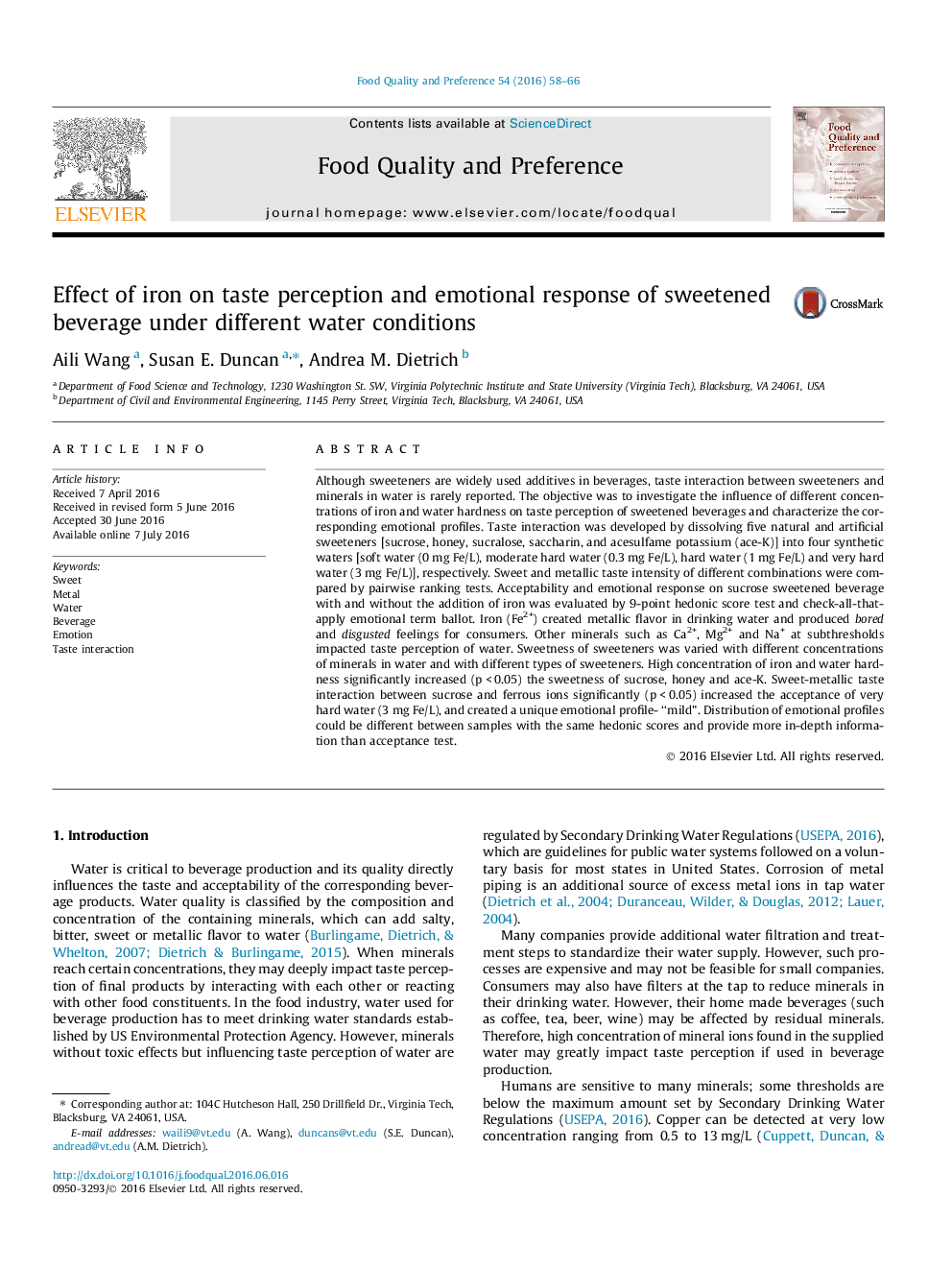| Article ID | Journal | Published Year | Pages | File Type |
|---|---|---|---|---|
| 6261141 | Food Quality and Preference | 2016 | 9 Pages |
â¢Minerals at low concentrations influence taste perception of water.â¢Sucrose is an effective sweetener in beverages with bitter compounds or metal ions.â¢Acesulfame-K and honey are effective sweeteners for beverages with high metal ions.â¢Water chemistry may affect sweetness perception of alternative sweeteners.â¢Taste interactions of sweeteners with metals differ based on water hardness.
Although sweeteners are widely used additives in beverages, taste interaction between sweeteners and minerals in water is rarely reported. The objective was to investigate the influence of different concentrations of iron and water hardness on taste perception of sweetened beverages and characterize the corresponding emotional profiles. Taste interaction was developed by dissolving five natural and artificial sweeteners [sucrose, honey, sucralose, saccharin, and acesulfame potassium (ace-K)] into four synthetic waters [soft water (0 mg Fe/L), moderate hard water (0.3 mg Fe/L), hard water (1 mg Fe/L) and very hard water (3 mg Fe/L)], respectively. Sweet and metallic taste intensity of different combinations were compared by pairwise ranking tests. Acceptability and emotional response on sucrose sweetened beverage with and without the addition of iron was evaluated by 9-point hedonic score test and check-all-that-apply emotional term ballot. Iron (Fe2+) created metallic flavor in drinking water and produced bored and disgusted feelings for consumers. Other minerals such as Ca2+, Mg2+ and Na+ at subthresholds impacted taste perception of water. Sweetness of sweeteners was varied with different concentrations of minerals in water and with different types of sweeteners. High concentration of iron and water hardness significantly increased (p < 0.05) the sweetness of sucrose, honey and ace-K. Sweet-metallic taste interaction between sucrose and ferrous ions significantly (p < 0.05) increased the acceptance of very hard water (3 mg Fe/L), and created a unique emotional profile- “mild”. Distribution of emotional profiles could be different between samples with the same hedonic scores and provide more in-depth information than acceptance test.
